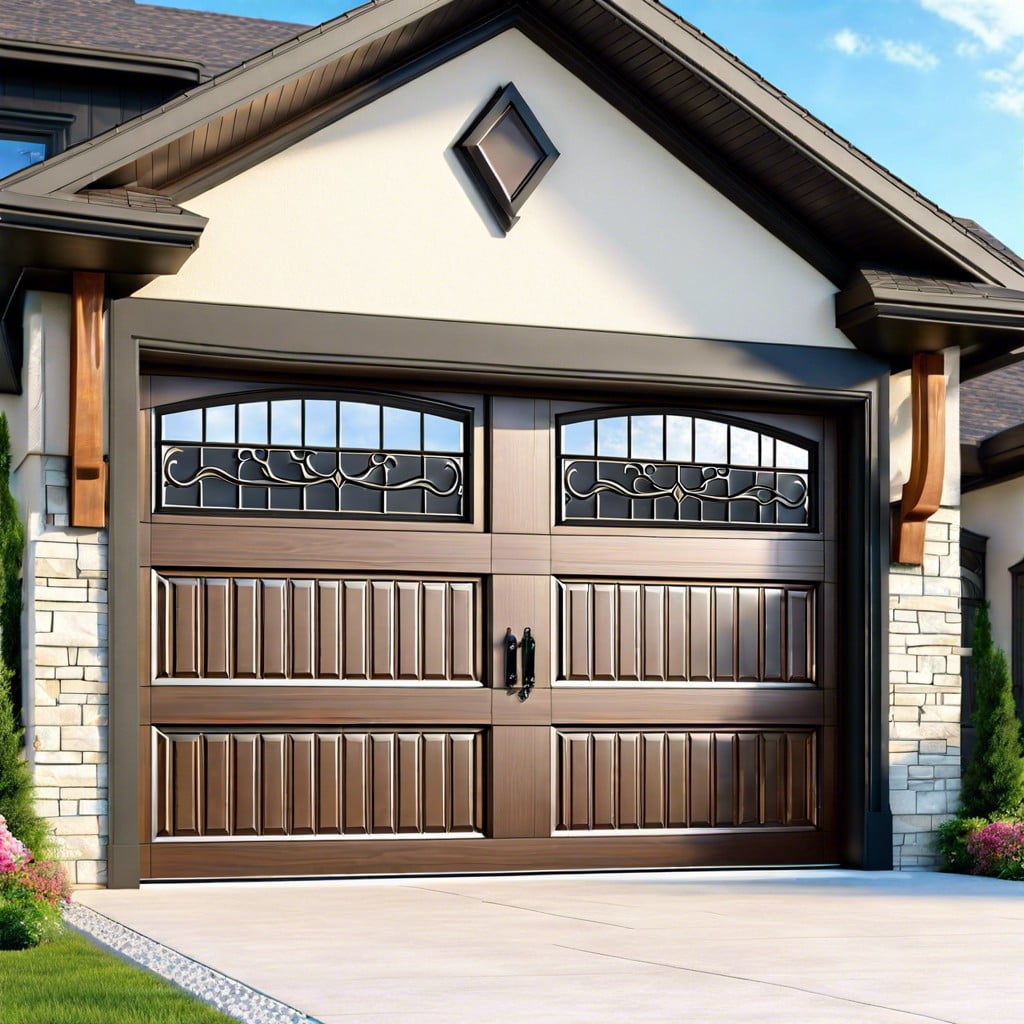Learn how to choose the right garage door window inserts to enhance your home’s curb appeal and functionality.
Key takeaways:
- Garage door window inserts enhance curb appeal and functionality.
- Types of inserts include clear, frosted, decorative, and acrylic/tempered glass.
- Installation involves measuring, cutting, sealing, and securing the inserts.
- Energy-efficient options reduce heat transfer and improve insulation.
- Consider safety features like tempered glass and privacy options.
Benefits of Garage Door Window Inserts

Garage door window inserts transform the appearance of your home, offering a touch of personal style while enhancing curb appeal. These decorative elements can mimic the design of your home’s windows, creating a cohesive look. Natural light flows into the garage with window inserts, reducing the need for artificial lighting and creating a more welcoming space. This feature is particularly useful for workshops or hobby areas within the garage. Additionally, window inserts can be tailored to your privacy needs; options range from clear glass to frosted or tinted varieties, allowing light entry while obscuring visibility. They are also a smart upgrade for those looking to boost property value as they contribute to the aesthetic enhancement of the home’s exterior.
Types of Garage Door Window Inserts
Window inserts come in a variety of designs and materials, catering to both aesthetic preferences and functional needs. Clear glass inserts allow natural light to flood the garage while maintaining visibility. For those seeking privacy, frosted or tinted glass options obscure the interior view, offering discretion without sacrificing light.
Decorative inserts with intricate designs, patterns, or faux wrought iron give garage doors an upscale look, complementing the home’s exterior. These can range from simple, geometric patterns to elaborate, custom motifs.
Acrylic and tempered glass options offer durability and resistance to breakage. Acrylic inserts are lighter and less prone to shattering, ideal for high-traffic garages. Tempered glass, while heavier, is treated for strength and safety, fragmenting into small, less harmful pieces upon impact.
Snap-in designs are a popular choice for their ease of installation and versatility. They allow homeowners the flexibility to change styles or remove them for cleaning with minimal effort.
Installation Process for Window Inserts
Installing window inserts into an existing garage door involves a straightforward procedure that can often be completed as a do-it-yourself project, provided you have basic tools and a bit of handiness.
First, measure the panel where the window insert will be placed to ensure a proper fit. Mark the area carefully, as precision is key to a seamless finish. Once measurements are confirmed, the cut-out can begin. Using a jigsaw or similar cutting tool, remove the marked portion of the garage door panel.
Next, prepare the window insert for installation. Most inserts have a lip that will sit against the garage door panel; apply a bead of caulk around the edge to create a weatherproof seal. Position the insert into the cut-out space from the outside and press firmly into place.
On the interior side of the door, secure the insert with retaining clips or screws, depending on the design of the window insert. Ensure that it is fastened evenly to prevent gaps.
Finally, inspect the installed insert for any movement or air leaks. Applying additional caulk around the insert’s perimeter on the inside can provide extra insulation and protection from the elements.
Remember to handle glass carefully throughout the process and wear protective gear when necessary. If the task seems beyond your skill level, employing a professional is advised to ensure the window insert is installed safely and correctly.
Energy Efficiency and Insulation Considerations
When selecting window inserts for your garage door, taking into account their impact on energy efficiency is important. Inserts made of double- or triple-pane glass with low-emissivity (Low-E) coatings can significantly reduce heat transfer, which keeps the garage temperature more stable and reduces the burden on your home’s HVAC system.
Furthermore, some inserts come with insulating frames or weatherstripping that enhances the seal around the window. This upgrade can curb drafts, further contributing to energy savings. It’s essential to check the insulation rating or R-value of the inserts. A higher R-value indicates better insulative properties, making it a preferable choice for those living in climates that experience extreme temperatures.
In areas prone to intense sunlight, tinted or frosted glass options not only enhance privacy but also diminish the sun’s glare and heat entering the garage. Selecting the right type of window insert can lead to long-term cost savings by reducing energy bills, while simultaneously maintaining aesthetic appeal and natural light access.
Safety and Security Features of Window Inserts
Garage door window inserts can enhance the appearance of a home, but it’s crucial to consider their impact on safety and security. Tempered glass is often used for its ability to withstand impact better than standard glass, shattering into small, less harmful pieces if broken. This reduces the risk of injury and deters potential intruders deterred by the difficulty of creating an entry point.
Privacy is another important consideration. Inserts with frosted, tinted, or patterned glass allow natural light in while obscuring the interior view, keeping belongings out of sight from passersby. Additionally, some homeowners opt for reinforced frames or added security films that make glass harder to penetrate.
Regular maintenance, such as checking the integrity of the window seals and ensuring locks are functioning, is key to keeping these features effective. Remember that while window inserts can add to the aesthetic and value of a garage, integrating security measures will help maintain its safety.